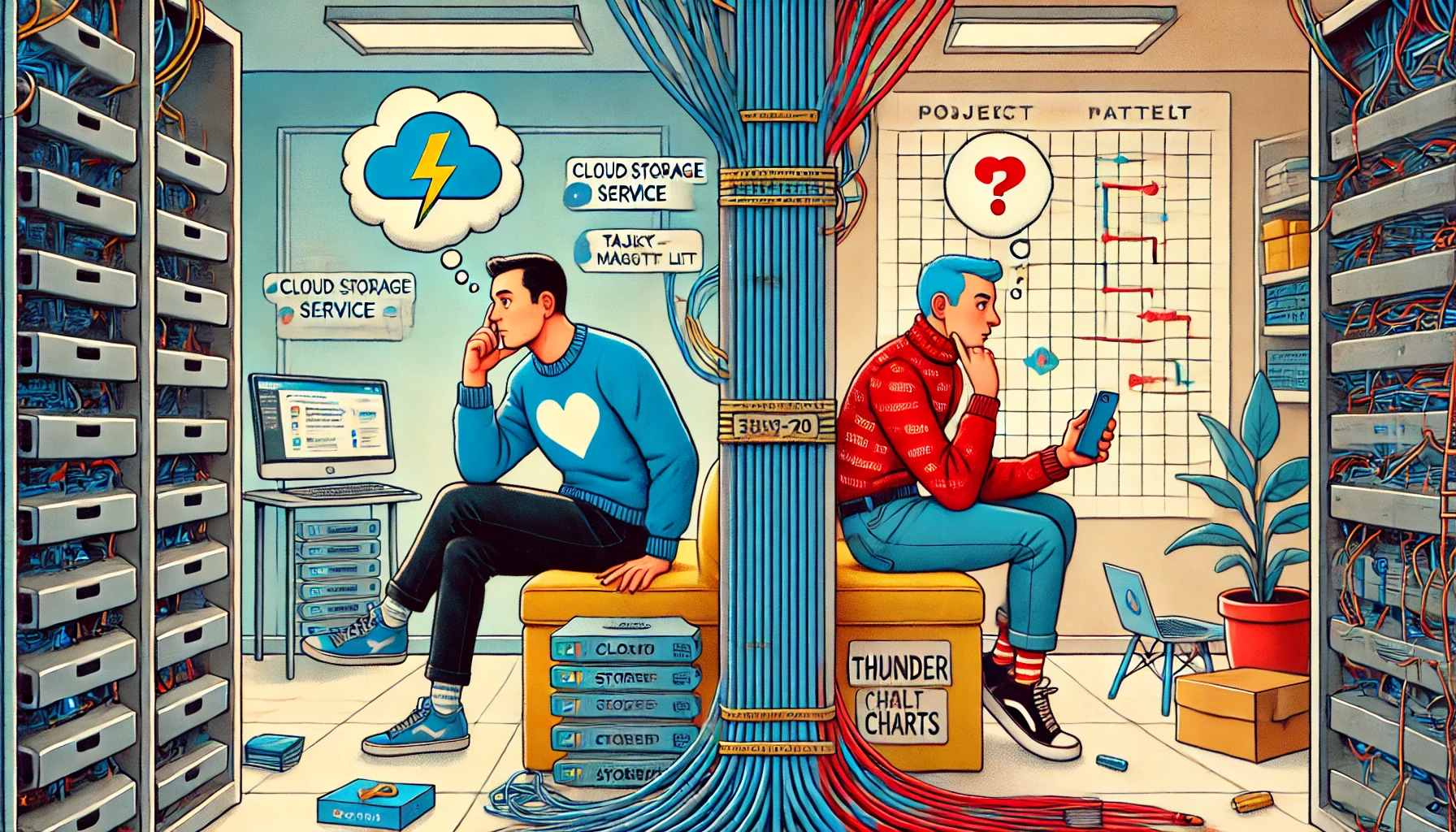So you’ve been told by both your SaaS platform vendors that data integration is easy “because we have an API” but then it just seems to get hard.
Here’s why and the approaches that can resolve the issue.
Key Takeaways
- APIs allow different software systems to communicate, but sometimes they face a “digital standoff” where neither initiates the conversation.
- Webhooks solve this by automatically notifying other systems when changes occur, enabling real-time updates.
- Data pumps act as intermediaries, regularly checking systems for new data and transferring it between them.
- Both webhooks and data pumps are popular due to their balance of functionality, ease of use, and ability to work with various systems.
- The choice between webhooks, data pumps, or other solutions depends on your specific needs, technical requirements, and the capabilities of your existing systems.
- Key Takeaways
- Webhooks: The Proactive Messengers
- Data Pumps: The Digital Courier Service
- Choosing Between Webhooks and Data Pumps
- Why Webhooks and Data Pumps Have Become Popular Choices
- Scheduled Jobs / Cron Tasks
- Message Queues
- API Gateways
- Serverless Functions
- Integration Platforms as a Service (iPaaS)
- Custom Middleware
- Event-Driven Architecture
What is an API, anyway!
First , let’s break down what an API actually is.
API stands for “Application Programming Interface”.
Think of it as a digital waiter in a restaurant. Just as a waiter takes your order and brings it to the kitchen, then delivers your meal back to your table, an API takes requests from one software system, delivers them to another, and returns the response.
APIs are crucial because they allow different software systems to talk to each other, share data, and work together seamlessly. Without APIs, your various business tools would be isolated islands of information, unable to share crucial data that keeps your business running efficiently.
The Digital Standoff
Here’s where things get interesting – many (most) modern systems have APIs. That’s great! It means they have the potential to communicate and share data.
But here’s the catch: sometimes, both systems are set up to wait for the other to initiate the conversation.
Imagine two people at a party, both interested in talking to each other, but each waiting for the other to make the first move. They might spend the whole evening stealing glances but never actually speaking.
That’s essentially what’s happening with these APIs – they’re capable of communication, but neither is taking the initiative to start the conversation.
Solutions to Break the Digital Silence
Now let’s explore the two most common solutions that have emerged to break this digital standoff: Webhooks and Data Pumps.
Each has its own strengths and considerations.
Webhooks: The Proactive Messengers
Imagine if our shy party-goers could set up a system where they automatically sent a message to the other person whenever something interesting happened in their life. That’s essentially what webhooks do in the world of APIs.
How Webhooks Work
Instead of constantly asking, “Has anything changed?” (which is how traditional APIs often work), webhooks notify the other system immediately when a relevant event occurs.
Webhooks often use APIs as the underlying processing and are two directional:
Sending: When a relevant event occurs the source systems sends data to the receiving system: “here’s that data you said you wanted.”
Receiving ( Consuming or Catching): Webhooks from other systems can also be “caught” and the data processed.
Pros of Webhooks
- Real-time updates: Information is shared as soon as it changes.
- Efficiency: Reduces unnecessary API calls and server load.
- Simplicity: Once set up, they often require less ongoing management.
Cons of Webhooks
- Initial setup can be complex.
- Both systems need to support webhooks for them to work.
- Can be challenging to debug if something goes wrong.
Data Pumps: The Digital Courier Service
If webhooks are like an automatic messaging system, data pumps are more like a courier service that regularly checks both parties for packages to deliver.
How Data Pumps Work
Data pumps are specialized software systems designed to bridge the gap between different applications. They periodically check one system for new or updated data, then transfer that data to another system. They handle the “who goes first” problem by taking the initiative themselves.
Examples of Data Pumps
One of the most well-known data pump services is Zapier. It’s a user-friendly platform that allows you to create “Zaps” – automated workflows that move data between your apps. Other examples include Microsoft Power Automate, Integromat, and MuleSoft.
Pros of Data Pumps
- Versatility: Can work with almost any system, even those without advanced API features.
- User-friendly: Many data pump services offer visual interfaces for setting up data flows.
- Transformation capabilities: Can often modify data during transfer to fit the receiving system’s requirements.
Cons and Considerations
- Cost: Data pump services usually come with a price tag. For instance, Zapier’s plans start at around $30 per month for basic features.
- Complexity: While user-friendly, setting up and maintaining data pumps adds another layer of technology to your stack. This means one more system to manage and troubleshoot.
- Data Security: Data pumps often involve your information passing through a third-party service. While reputable services prioritise security, it’s something to be aware of, especially if you’re dealing with sensitive data. Also, these services are typically hosted in the cloud, which means your data may be processed in different jurisdictions.
- Latency: Unlike webhooks, which provide real-time updates, data pumps operate on set schedules. This can introduce some delay in data synchronization.
Choosing Between Webhooks and Data Pumps
The choice between webhooks and data pumps often comes down to your specific needs and the capabilities of the systems you’re using. If both of your systems support webhooks and real-time updates are crucial, webhooks might be the way to go. If you need more flexibility, have systems with limited API capabilities, or need to transform data during transfer, a data pump solution could be your best bet.
Why Webhooks and Data Pumps Have Become Popular Choices
Webhooks:
- Real-time capability: Perfect for businesses that need immediate data updates.
- Efficiency: They reduce unnecessary API calls, saving on computational resources.
- Scalability: Can handle growing data volumes without significant changes to the setup.
- Wide support: Many modern systems now offer webhook support out of the box.
Data Pumps:
- Versatility: Can work with almost any system, even those without advanced API features.
- User-friendly: Many data pump services offer visual interfaces for setting up data flows, making them accessible to non-technical users.
- Transformation capabilities: Can modify data during transfer, solving compatibility issues between systems.
- Pre-built integrations: Many data pump services offer a wide array of pre-built connectors, reducing implementation time and complexity.
Both solutions strike a balance between technical capability and ease of use, making them suitable for a wide range of businesses. They can be implemented relatively quickly and don’t require extensive in-house technical expertise to maintain.
Other Approaches to Bridge the Gap
While webhooks and data pumps are the most common solutions to the API communication standoff, they’re not the only options available.
Scheduled Jobs / Cron Tasks
How it works: Systems are set up to perform regular, scheduled checks or data transfers at predetermined intervals.
Pros:
- Simple to set up and understand
- Works even with systems that have limited API capabilities
- Predictable resource usage
Cons:
- Often require custom software development and hosting
- Difficult to maintain as they can be hidden in the back end of software system.
- Not real-time; data is only as current as the last scheduled run
- Can be inefficient if checking for changes that happen infrequently
Message Queues
Think of a message queue as a mutual friend passing notes between two shy people. Both can leave messages without directly contacting the other.
How it works: A third-party message queue system acts as an intermediary, allowing both systems to send and receive messages without direct communication.
Pros:
- Decouples systems, reducing dependencies
- Can handle high volumes of messages
- Provides a buffer during peak loads or when a system is down
Cons:
- Adds complexity to the overall architecture
- Can introduce latency
- Requires management of the message queue system
API Gateways
An API gateway is like a party host who introduces guests to each other and facilitates conversations.
How it works: An API gateway manages the communication between multiple systems, handling the “who goes first” problem by acting as a central point of control.
Pros:
- Centralizes API management
- Can handle authentication, rate limiting, and analytics
- Simplifies the client-side code
Cons:
- General purpose API gateways are often quite expensive to setup, maintain and subscribe.
- Can become a single point of failure
- Adds another layer to the architecture
- May introduce latency
Serverless Functions
Serverless functions are like having a personal assistant who checks in with both parties regularly and relays any important information.
How it works: Cloud providers offer serverless functions that can be triggered on a schedule or by events, which can poll APIs and transfer data as needed.
Pros:
- Highly scalable
- Pay only for what you use
- Can be event-driven or scheduled
Cons:
- Can be complex to set up and debug
- Potential for unexpected costs if not managed properly
- May have cold start issues
Integration Platforms as a Service (iPaaS)
iPaaS solutions are like hiring a professional matchmaker who not only introduces people but also helps them communicate effectively and build a lasting relationship. (Am I pushing this analogy too far? 😀)
How it works: These platforms offer a full suite of integration tools, often including features like data mapping, transformation, and workflow automation.
Pros:
- Comprehensive solution for complex integration needs
- Often includes pre-built connectors for popular systems
- Provides monitoring and management tools
Cons:
- Can be expensive for small-scale needs
- May be overkill for simple integrations
- Potential vendor lock-in
Custom Middleware
Building custom middleware is like hiring a dedicated translator who understands the unique ‘languages’ of both systems and can facilitate communication between them.
How it works: For companies with specific needs or the technical resources, building custom middleware to handle communication between systems can be a solution.
Pros:
- Tailored to your exact needs
- Can be highly optimized for your use case
- Gives you full control over the integration process
Cons:
- Requires significant development resources
- Ongoing maintenance responsibility
- May be overkill for simple integration needs
Event-Driven Architecture
Imagine if instead of calling each other, our shy daters agreed to send up a flare whenever something important happened. The other would see the flare and know to check in.
How it works: Systems are designed to emit events that other systems can listen for and react to, solving the initiation problem.
Pros:
- Enables real-time reactions to changes
- Can create very loosely coupled systems
- Scalable and flexible
Cons:
- Is a core requirement of each system architecture
- Can be complex to implement and debug
- Requires careful design to avoid event storms or circular events
- May require significant changes to existing systems
Each of these approaches has its own strengths and weaknesses, and the best choice depends on your specific needs, technical capabilities, and the systems you’re working with. In many cases, a combination of these approaches might be the most effective solution.
Remember, the goal is to create a seamless flow of information between your systems. Whether you’re using webhooks, data pumps, or any of these alternative approaches, the key is to break down the silos and get your data moving efficiently across your entire software ecosystem.
Get the Business Leader's Guide to Net Promoter Score Download Here








